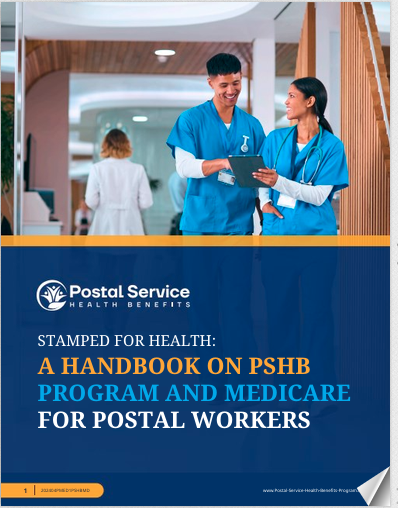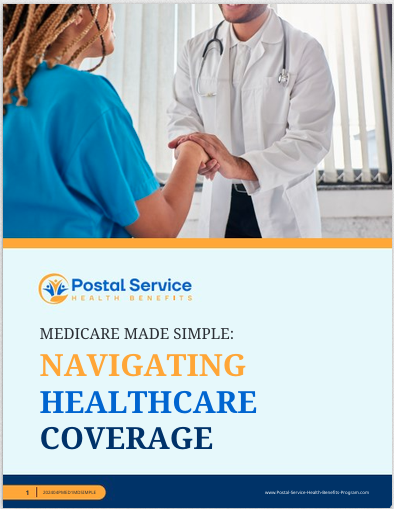Key Takeaways
-
Medigap premiums vary widely based on several factors, including your age, location, and the type of plan you choose.
-
Understanding how Medigap premiums can increase over time helps you avoid unexpected costs and better plan your healthcare expenses during retirement.
Medigap Premiums—Why You Should Care
If you’re a USPS employee or retiree enrolled in the Postal Service Health Benefits (PSHB) program, you might already know how essential comprehensive health coverage is during retirement. However, even the best insurance coverage can leave some gaps—especially when dealing with Medicare. That’s where Medigap policies come into play.
But there’s a catch: Medigap premiums aren’t static. They can fluctuate, sometimes dramatically, depending on various factors. Knowing how these premiums behave can significantly impact your financial planning.
Let’s dive into three crucial facts about Medigap premiums that could reshape your coverage strategy in 2025 and beyond.
1. Medigap Premiums Are Not One-Size-Fits-All
First things first—Medigap premiums aren’t standardized. Yes, Medigap plans are standardized in terms of benefits, labeled from Plan A through Plan N, but what you pay in premiums can differ substantially.
Here’s why your premium might differ from your coworker’s, even if you both choose the exact same plan:
Age-Based Pricing
Medigap insurers use three primary pricing models:
-
Community-rated: Everyone pays the same premium regardless of age.
-
Issue-age-rated: Your premium is based on your age when you first buy the policy. The younger you buy, the cheaper the premium stays.
-
Attained-age-rated: Your premium is based on your current age, meaning it rises as you get older.
Knowing your insurer’s pricing model upfront helps you predict future premium increases and avoid sticker shock down the road.
Location Matters
Medigap premiums also vary widely based on geography. Insurance providers set premiums according to healthcare costs and market competition in each state or even specific ZIP codes. If you live in an area with fewer healthcare providers or higher healthcare costs, expect your premiums to reflect that.
Coverage Type and Level
While Medigap plans cover the same standardized benefits, plans with more comprehensive coverage (such as Plan G or Plan F for eligible enrollees) naturally cost more in premiums than those offering fewer benefits. It’s critical to weigh monthly premiums against out-of-pocket costs you might face without sufficient coverage.
2. Premiums Increase Over Time—But How Fast?
It’s a universal truth: premiums usually go up as you age, but not all increases are created equal. Here’s what you need to know about potential premium hikes:
Premium Inflation
Regardless of the pricing method, Medigap premiums typically rise over time due to medical inflation and the rising cost of healthcare. Historically, Medigap premiums have increased approximately 3% to 5% per year, but this can vary widely depending on local healthcare costs and changes in Medicare regulations.
Attained-Age Pricing Pitfalls
If your plan uses attained-age pricing, expect your premiums to climb significantly every year as you age. For younger retirees (say age 65-70), premium increases might be modest at first but can accelerate sharply as you reach your mid-70s or 80s. It’s crucial to factor these increases into your retirement budgeting.
Issue-Age Stability
Plans priced using the issue-age method tend to be more predictable. Your premium is based on your enrollment age and does not increase due to your advancing age. However, these plans are still subject to inflation-based adjustments. You’ll see premium increases, just not as drastically as with attained-age pricing.
Understanding the type of premium structure your plan uses helps you anticipate future costs better, enabling you to plan and budget accordingly, reducing financial stress later in retirement.
3. Switching Plans Later Could Cost You More—Or Even Deny You Coverage
One aspect of Medigap premiums many USPS retirees underestimate is the timing factor. The ideal moment to enroll in Medigap is during your initial Medigap Open Enrollment Period—lasting six months, starting the month you turn 65 and enroll in Medicare Part B. During this window, insurers can’t deny you coverage or charge higher premiums based on pre-existing conditions.
But what happens if you miss this golden window?
Medical Underwriting Risks
Outside of your initial enrollment period, Medigap insurers can use medical underwriting to set premiums or deny coverage entirely based on your health. This means if your health changes as you age, you may face significantly higher premiums or might even find yourself unable to secure a new Medigap policy.
Guaranteed-Issue Rights
Certain situations grant guaranteed-issue rights, allowing you to buy a Medigap policy without medical underwriting. For example, if your PSHB plan ends or you move out of its service area, you have a brief window (usually 63 days) to enroll in a Medigap plan without penalty. Knowing these specific circumstances can save you from costly premiums or coverage denials down the road.
Cost of Waiting
Even if you’re healthy now, delaying enrollment in Medigap coverage could mean higher premiums later. If health conditions arise, insurers may apply higher premiums or outright deny coverage based on underwriting.
To avoid these costly scenarios, plan your enrollment strategically, taking advantage of your initial open enrollment window or guaranteed-issue opportunities.
Adjust Your Strategy—Your Next Steps
Medigap policies can provide essential financial protection, but managing premiums requires proactive planning:
-
Evaluate Your Budget: Consider your retirement income and budget for expected annual premium increases.
-
Assess Your Health: Honestly assess your current health and family history to gauge potential medical expenses and select appropriate coverage.
-
Review Pricing Methods: Choose an insurer whose premium structure aligns with your financial plans and provides predictable cost management.
-
Stay Alert: Be aware of your initial enrollment window and guaranteed-issue rights to secure optimal coverage at lower premiums.
Getting Professional Guidance
Medigap coverage decisions are complex, especially combined with PSHB options. Professional assistance can simplify these decisions. A licensed agent can help clarify your choices, ensuring your coverage aligns with your retirement lifestyle and financial goals. Remember, the choices you make now significantly impact your long-term financial security and peace of mind.
For personalized advice about your Medigap options and how they integrate with your PSHB coverage, connect with a licensed agent listed on this website. Their expert guidance helps ensure you make informed, cost-effective healthcare decisions.







